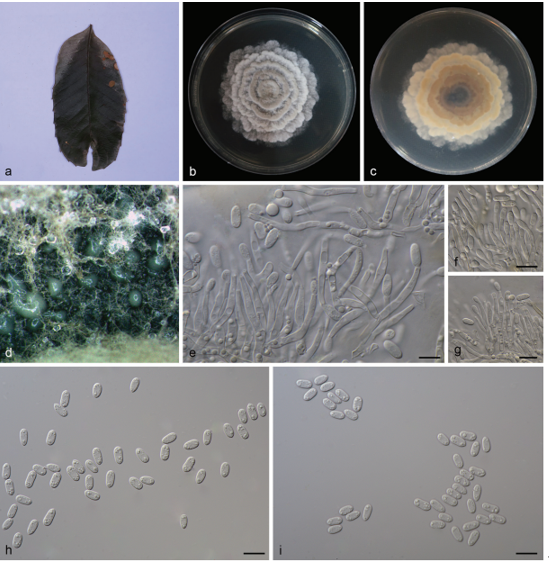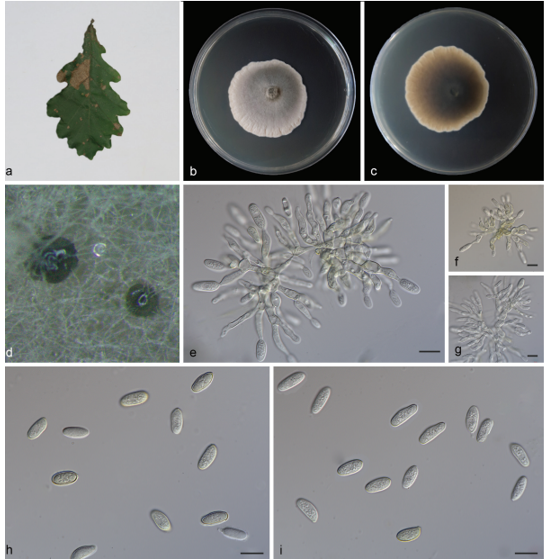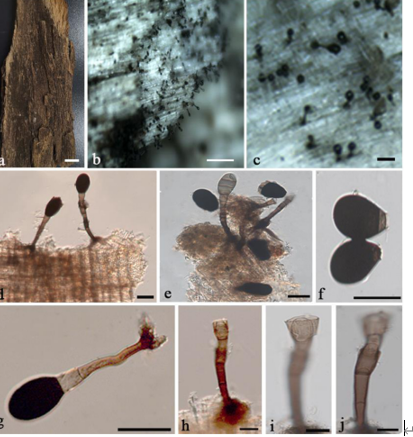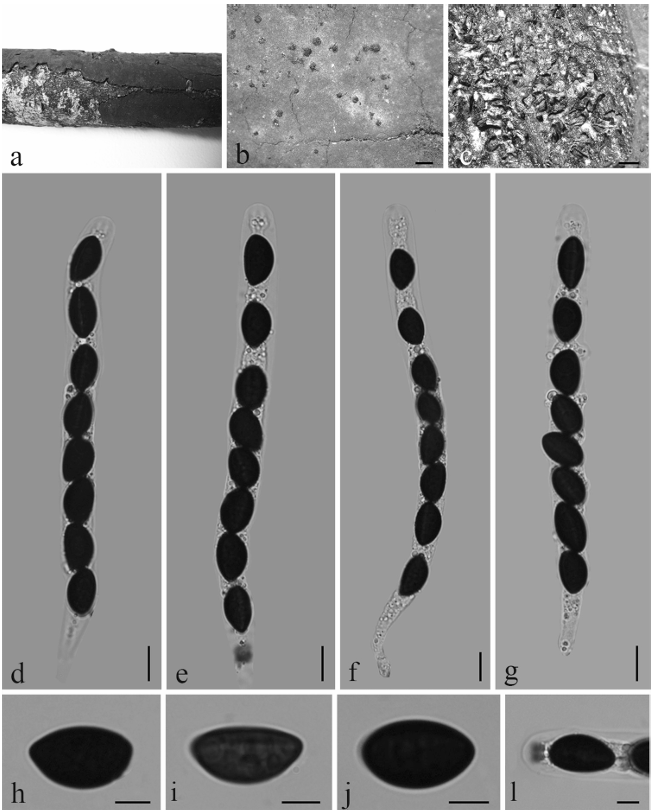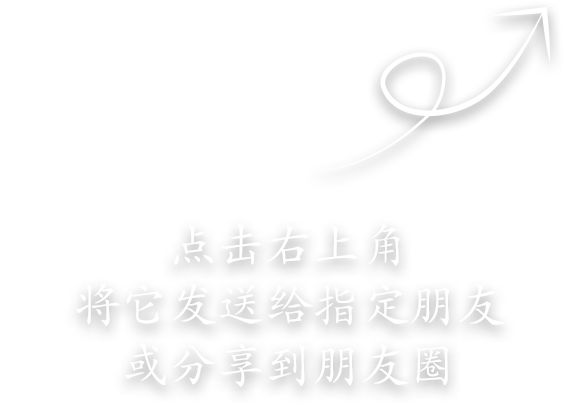Gamszarea lunata Z.F. Zhang & L. Cai, sp. nov. 2020
Index Fungorum number: 557632; Facesoffungi number: FoF 08446
Holotype: CHINA, Guangxi, Guilin, E’gu Cave, N 24.942°, E 110.511°, on rock, May 2016, Z.F. Zhang, HMAS 247996 (holotype designated here), ex-type living culture CGMCC3.19315 = LC12545; ibid., LC12546.
Morphological description
Hyphae hyaline, septate, smooth, 1.0–2.5 μm wide. Asexual morph Conidiophores arising from prostrate aerial hyphae, erect, hyaline, 1.0–2.0 μm diam. Phialides arising from prostrate aerial hyphae solitary, or in whorls of 2–4 at the apex of conidiophores, straight or slightly curved, tapering toward the apex, smooth, hyaline, 15.0–28.0 µm long, 1.0–2.0 µm diam. at base. Conidia unicellular, smooth, hyaline, each phialide producing one macroconidia and several microconidia, variable in size, aggregated in slimy head; macroconidia long fusiform or falcate, 7.0–9.5 × 1.5–2.5 µm ( x̄ ± SD = 8.3 ± 0.77 × 2.0 ± 0.19 µm, n = 30); microconidia mostly lunate, 3.0–5.0 × 1.5–2.0 µm ( x̄ ± SD = 3.8 ± 0.49 × 1.7 ± 0.14 µm, n = 60). Sexual morph not observed. Culture characteristics—Colonies on PDA attaining 45–48 mm diam. after 4 weeks, cottony to pulverulent, slightly convex, margin entire, white. Reverse plicated, cream white to brown (7C6). Colonies on OA attaining 46–49 mm diam. after 4 weeks, flat, cottony, margin entire, white. Reverse white. Colonies on SNA attaining 47–49 mm diam. after 4 weeks, flat, pulverulent at center, aerial mycelia sparse, white. Reverse white. Sporulation within 3 weeks.
Habitat: on rock.
Distribution: Guangxi, Guilin, E’gu Cave, China.
GenBank Accession:
Notes: Gamszarea lunata can be easily distinguished from G. humicola (see notes of G. humicola). Macroconidia of G. lunata is wider than G. wallacei (1.5–2.5 µm vs. 1.0–1.5 µm). In addition, microconidia of G. lunata is lunate rather than ellipsoidal to slightly falcate in G. wallacei. Conidia of G. kalimantanensis are much longer than G. lunata (macroconidia: 9.0–12.0 µm vs. 7.0–9.5 µm, microconidia: 4.5–7.5 µm vs. 3.0–5.0 µm). Meanwhile, ITS sequences of G. kalimantanensis has 98% similarity to G. lunata (nine bp difference in 515 bp).
Reference: Zhi‑Feng Zhang ,Shi‑Yue Zhou ,Lily Eurwilaichitret al.
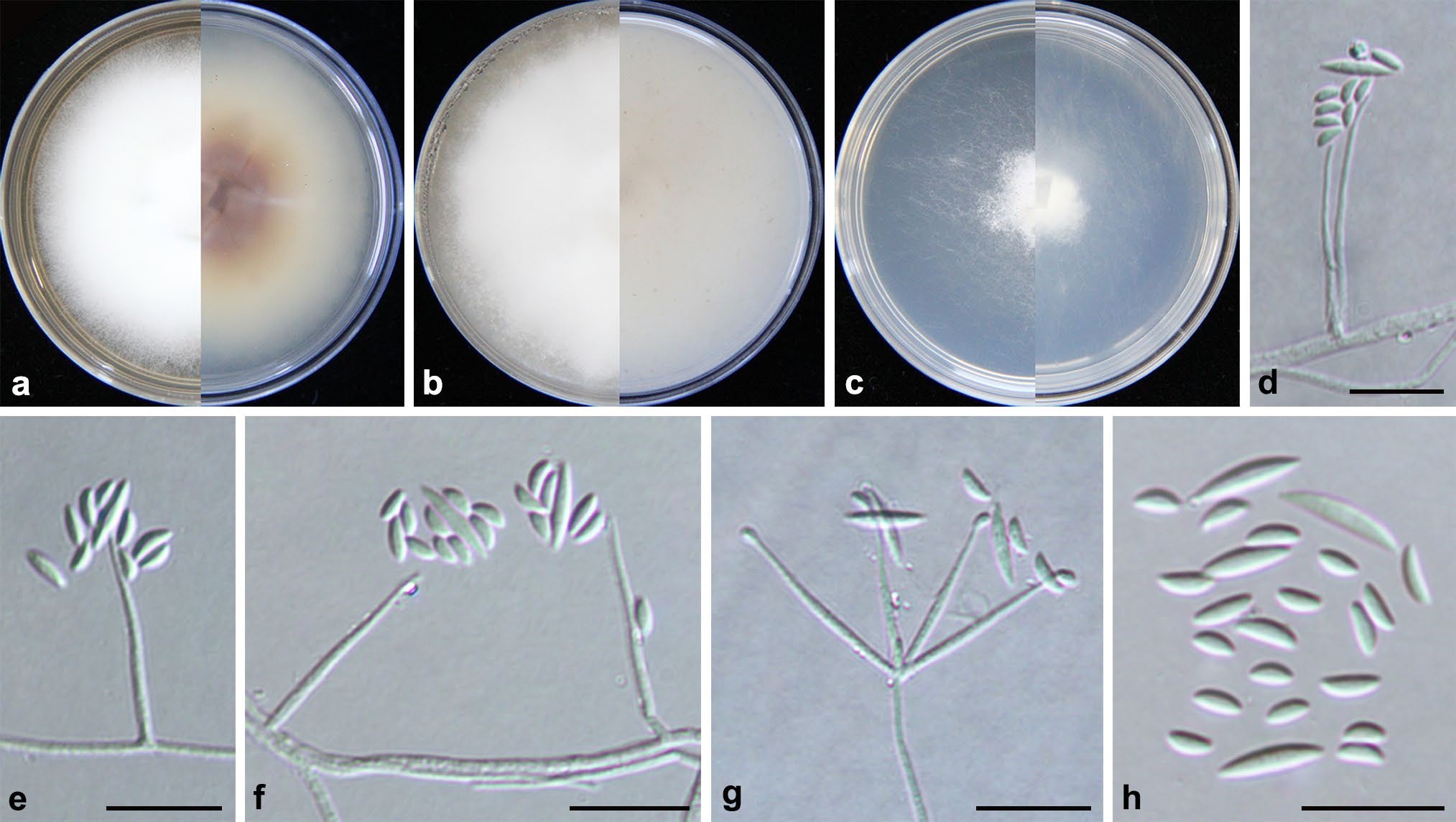
Gamszarea lunata (from ex-holotype CGMCC3.19315). a–c Upper and reverse views of cultures on PDA, OA and SNA 4 weeks after inoculation; d–f phialides and conidia in globose heads; g conid- iophores and phialides; h macroconidia and microconidia. Scale bars:
d–h 10 μm


